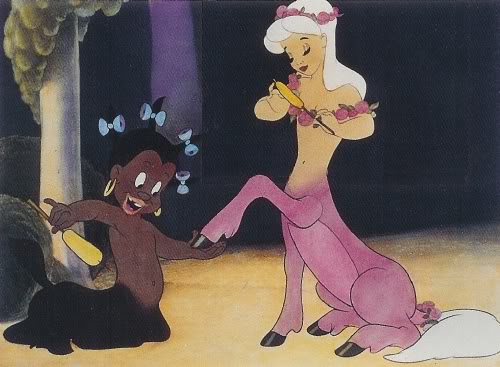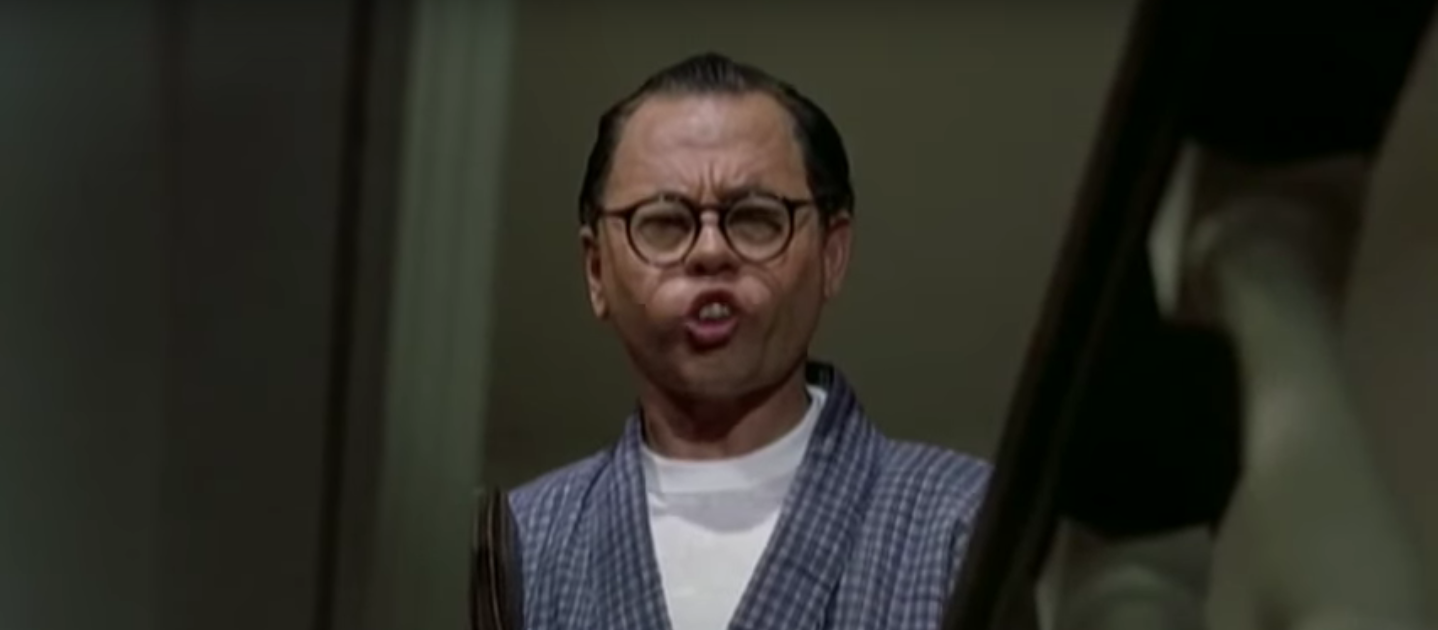Beloved Childhood Movies You Didn't Realize Were Racist

By:
At the risk of stating the obvious, children's movies are for children. Which means that some of their more troubling aspects, like blatant racism, often fly over the audiences' heads. Now that you're an adult, though, there are certain aspects of childhood classics that may make you think, "Wait, really?"
These are movies that we watched throughout our childhood without realizing they were racist. We'll exclude movies like Disney's "Song of the South" (upon which the Splash Mountain ride draws its inspiration) that we all knew were racist, even then, and classics like "Breakfast At Tiffany's," which are marred by racist character portrayals, but wouldn't exactly qualify as "childhood movies."
1. Peter Pan (1953)
"What Makes the Red Man Red?" is a musical number in this Disney classic that asks why "injuns" are "red" as Peter Pan and the Darling children run around smoking peace pipes, wearing headdresses, and "whooooooooo"-ing with their hands fluttering over their mouths. One YouTube comment puts it best: "This is so racist it's surreal."
2. Jungle 2 Jungle (1997)
 Quentin X/Wikipedia - wikipedia.org
Quentin X/Wikipedia - wikipedia.org
Forty-four years after "Peter Pan" and Disney still can't help but display insensitivity towards Native Americans in their films. But considering this movie is a remake of a French film titled "Little Indian, Big City," it's not hugely surprising. Tim Allen plays a Wall Street trader named Michael who finds out that his white ex wife secretly gave birth to their son and raised him as Mimi-Siku in a tribe in Venezuela.
Wackiness ensues as Michael, who calls his son "Mitsubishi," spends time with him in his tribe and then brings him back to New York City. The movie peddles heavily in insensitive stereotypes about natives being clueless savages who do things like eat pet fish straight from the fish tank and always walk around barefoot in war paint.
3. Sixteen Candles (1984)
"Sixteen Candles," the teen comedy classic written and directed by John Hughes, seemed like a harmless romp when it was released. But upon viewing it in 2016, it features a few problematic scenes and moments, namely, the character Long Duk Dong.
Kat Chow of NPR faced some criticism from fans of the movie for calling the character "cringeworthy." In a follow-up piece, "What's So 'Cringeworthy' About Long Duk Dong in 'Sixteen Candles'?" she explains why.
Let's take his very first scene. Dong, a foreign exchange student, hangs upside down from a bunk bed. "What's happening, hot stuff?" he asks Molly Ringwald's Samantha, eyebrows wiggling suggestively. She just gives him a look; it's not gonna happen. A gong sounds off in the background.
Later, a crowd of baffled middle-aged white folks finds him sprawled face-down on the ground after a drunken night. "Ohh, no more yanky my wanky. The Dongle needs food!" he says.
Asian men have been fighting this on-screen stereotype for years: the socially inept mute; the lecherous but sexually inept loser; one part harmless Charlie Chan, one part mustachioed villain Fu Manchu.
Long Duk Dong was an Asian-American cliche for a new generation. And like most media cliches, it came with IRL implications.
ATTN: has previously reported on the struggle Asian actors faced in the media. They're either casts as nerds or they're not cast at all. Long Duk Dong is a key example of how these negative stereotypes are spread.
4. Indiana Jones and the Temple of Doom (1984)
The biggest complaint with this film in the Indiana Jones film series is the idea that 1. Indiana Jones is a savior figure who helps save hapless natives from themselves and 2. lazy stereotypes about Indian and Chinese culture abound.
"I hadn't seen the movie since I was a kid, and just rewatched it. Wow. Just wow.
I suppose I can ignore Jones's offensively stereotypical sidekick ('DOCTAH JAWNES!'). But the plot itself is deeply flawed.
The main victims of the movie are a group of Indian peasants so lacking in agency that they can't be roused to help themselves even when their children are taken away. Fortunately, a white guy falls out of the sky to save them.
The action shifts to the palace, where we are treated to a totally bizarre dinner scene. The food itself is obviously problematic--live snakes and chilled monkey brains?--but the conversation is more troubling. The British colonial officer is presented as a decent and affable fellow -- with explicitly racist views (more about him in a moment). The brown person who stands up to him (just to heap insult upon insult, played by the guy who played Nehru in Gandhi) of course turns out to be evil." [...]
5. Fantasia (1940)
"Fantasia" is one of the most shockingly racist films you didn't know was racist because the most offensive scenes were cut after 1968. These scenes focused on a young black centaur drawn with stereotypical black features named Sunflower, who seemingly only existed to groom the white Disney Princess centaurs.
 Fantasia/Disney Wikia - wikia.com
Fantasia/Disney Wikia - wikia.com
"It’s sort of appalling to me that these stereotypes were ever put in," said editor John Carnochan, who was responsible for removing these scenes from the 1991 home video edition of "Fantasia."
6. Ace Ventura: When Nature Calls (1995)
Is "Ace Ventura: When Nature Calls," the sequel to "Ace Ventura: Pet Detective" really considered a "beloved childhood movie"?
Probably not. Is it racist? Oh yeah.
Det. Ventura is sent to the fictional country of Nibia in Africa to find a rare bat. In doing so, he manages to show total disrespect for any sort of African tribal culture, real or not, and also takes on the white-man-as-savior figure. Observe this scene, titled "Tribal Fight":
7. Lady and the Tramp (1955)
Most of us remember "Lady and the Tramp" as a heartwarming movie about how dogs can share spaghetti, completely forgetting about the film's disappointingly racist take on Asian culture and stereotypes. Case in point, "We Are Siamese (If You Please)":
The Siamese cats are drawn with all the subtlety of Mickey Rooney's Mr. Yunioshi character from "Breakfast at Tiffany's."
 WatchMojo.com/YouTube - youtube.com
WatchMojo.com/YouTube - youtube.com
Flavorwire explains what is so problematic about these cartoon cats:
"You could argue, if you tried very, very hard, that these racial associations are nothing more than arbitrary, but the division between Axis and Allied powers during World War II — during which Thailand was a firm supporter of Japan after waging war against France during the Franco-Thai war of 1940 — firmly suggests otherwise. The Japanese internment camps of the early ’40s — in which over 100,000 Asian-Americans, 62% of whom were US citizens — were both a symptom of and further inspiration for a sharp increase in anti-Asian sentiment, and merely augmented the perennial American habit of painting Asia as a monolith comprised of fungible ethnic and cultural heritages. Si and Am of 'Lady and the Tramp,' which premiered just a decade after the war’s end, were undoubtedly conjured by the remaining prejudices of this milieu..."
None of this means that you have to destroy your Disney tapes or that you're a terrible person for having enjoyed these films. It just means that maybe there are certain depictions in media that we consumed when we were young that sent messages that weren't as pure and wholesome as we thought. And if those messages offend you, that's entirely acceptable.
